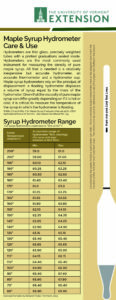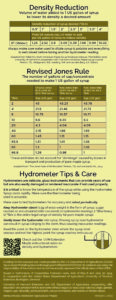Tapping Zone Model – Tubing
This model estimates the proportion of clear, conductive wood in the tapping zone of an individual tree each year (for 100 years) based on the values input for tree diameter, tapping depth, spout size, number of taps, and dropline length. This is equivalent to the chances of tapping into conductive wood in this tree each year Ð if 80% of the wood in the tapping zone is conductive, you have an 80% chance of hitting conductive wood when you tap that tree. The model can be used to estimate whether various tapping practices are likely to be sustainable. A more complete description of the model and guidelines for its use can be found in the companion technical report “A Model of the Tapping Zone”, which is available on the UVM-PMRC website (http://www.uvm.edu/~pmrc).

